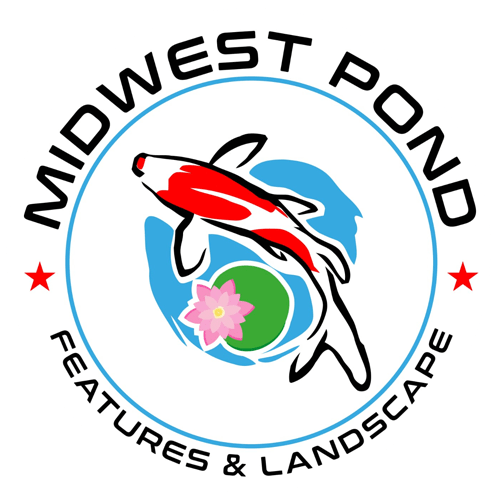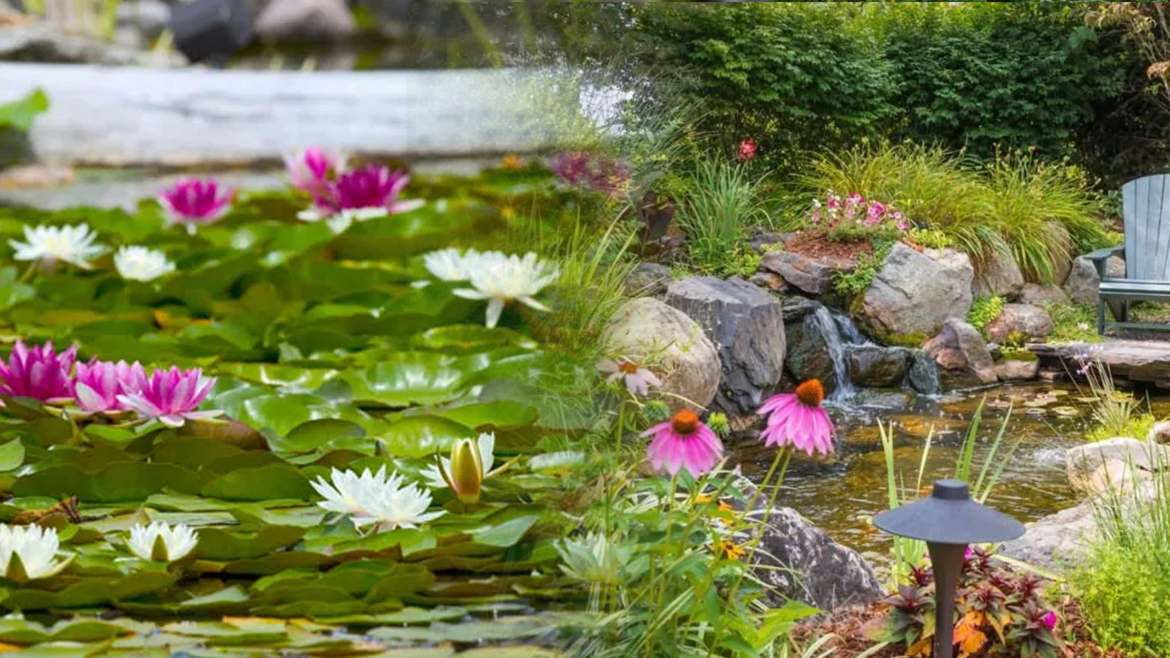Pond Plants You Need To Have In Your Garden
A backyard garden pond is an excellent choice for outdoor space, as you will have unforgettable moments of tranquility. Plants are not only meant for decoration, but they also play a role in the environment and make the fish’s health great.
In this blog, we will discuss some of the beautiful aquatic plants that add a visual feast to the pond and have many benefits for the garden ecosystem.
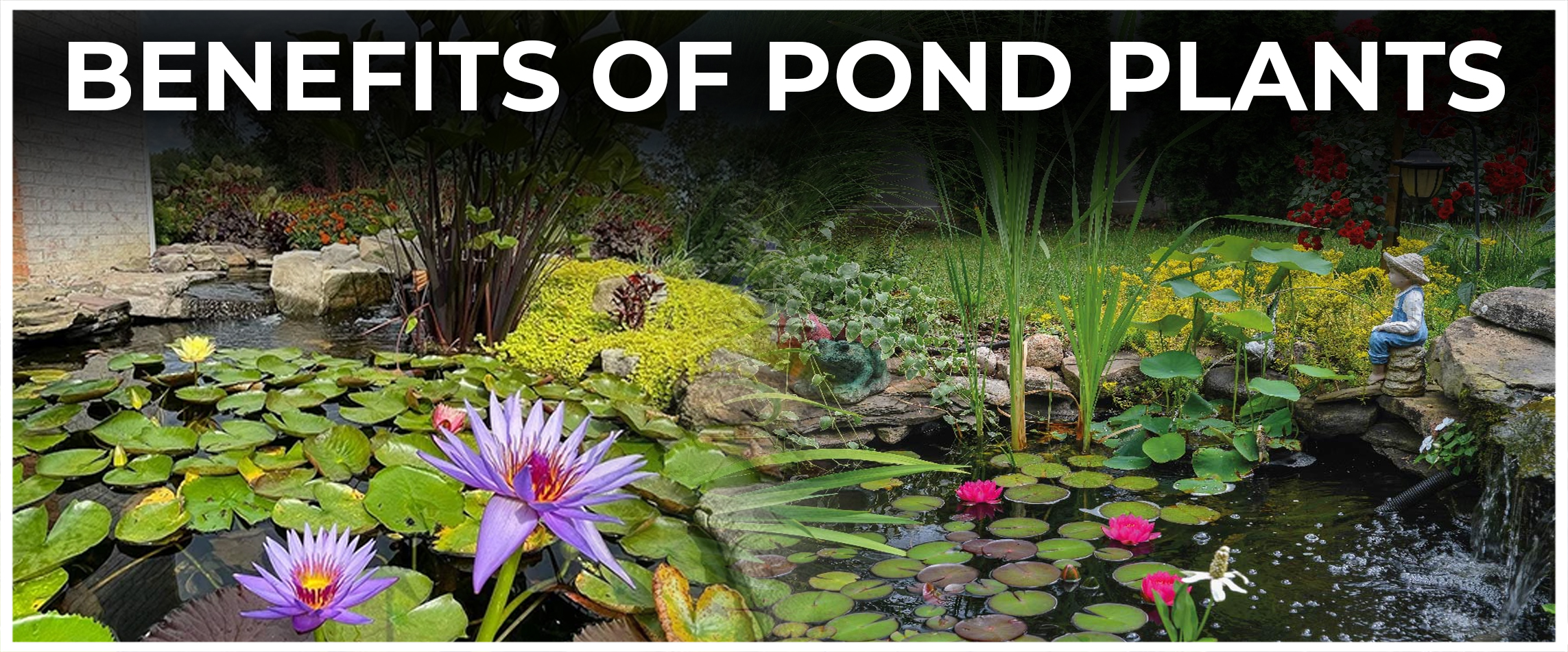
Benefits of Pond Plants
Pond plants are natural water cleaners. They remove extra nutrients and pollutants that cause poor clarity.
Moreover, oxygenating pond plants oxygenate the water through photosynthesis, which is essential for the wellness of pond fish and other water animals.
Also, the leaves of plants in the pond would provide shade, which helps the water stay cooler and prevent excessive algae from developing.
These plants play an essential role in maintaining the pond ecosystem in a proper balance, giving appropriate conditions for the pond fish and other creatures to live and grow in.
Water Lilies
Water lilies are charming plants that grow in ponds and have flowers floating on the water. These plants come in many colors and will make the pond look nice. Water lilies also shade fish and other water animals.
Water lilies are essential for keeping the water clean. Water lilies stop algae from growing and prevent too much sunlight from entering the water.
Cattails
Cattails are often used at the edge of ponds because they look natural and can help clean the water by removing extra nutrients.
These plants are from North America and grow in wet areas like marshes, swamps, and ponds. Cattails have long, skinny stems with soft brown flowers that grow in the summer. Cattails grow to 10 feet tall and have long, thin leaves resembling grass blades.
Cattails give animals like birds, insects, and small mammals a place to live and find food. They also help remove extra water nutrients, stopping algae from growing. Cattails are easy to care for and can grow well in many ponds.
They like to be in the sun and have damp soil. They can handle being in different depths of water. Cattails can handle water levels that go up and down and live through long periods without rain.
Lotus
Lotus plants are often chosen for pond gardens because they have beautiful, sweet-smelling flowers and big, round leaves. They are water plants from Asia and come in many colors, such as white, pink, red, and yellow. Like water lilies, they shade and protect animals and keep the water fresh.
Lotus plants can soak up extra nutrients in the water, which prevents algae from growing. Their long roots keep them in one place, preventing the land from disappearing.
Lotus plants need special care, and picking a type that will work well with the pond’s size, depth, and amount of sunlight is essential.
They usually like lots of sunlight and thrive in water that doesn’t move much or moves slowly. The water feature’s ideal depth should be 3 feet. Lotus plants need good soil and regular food to grow well.
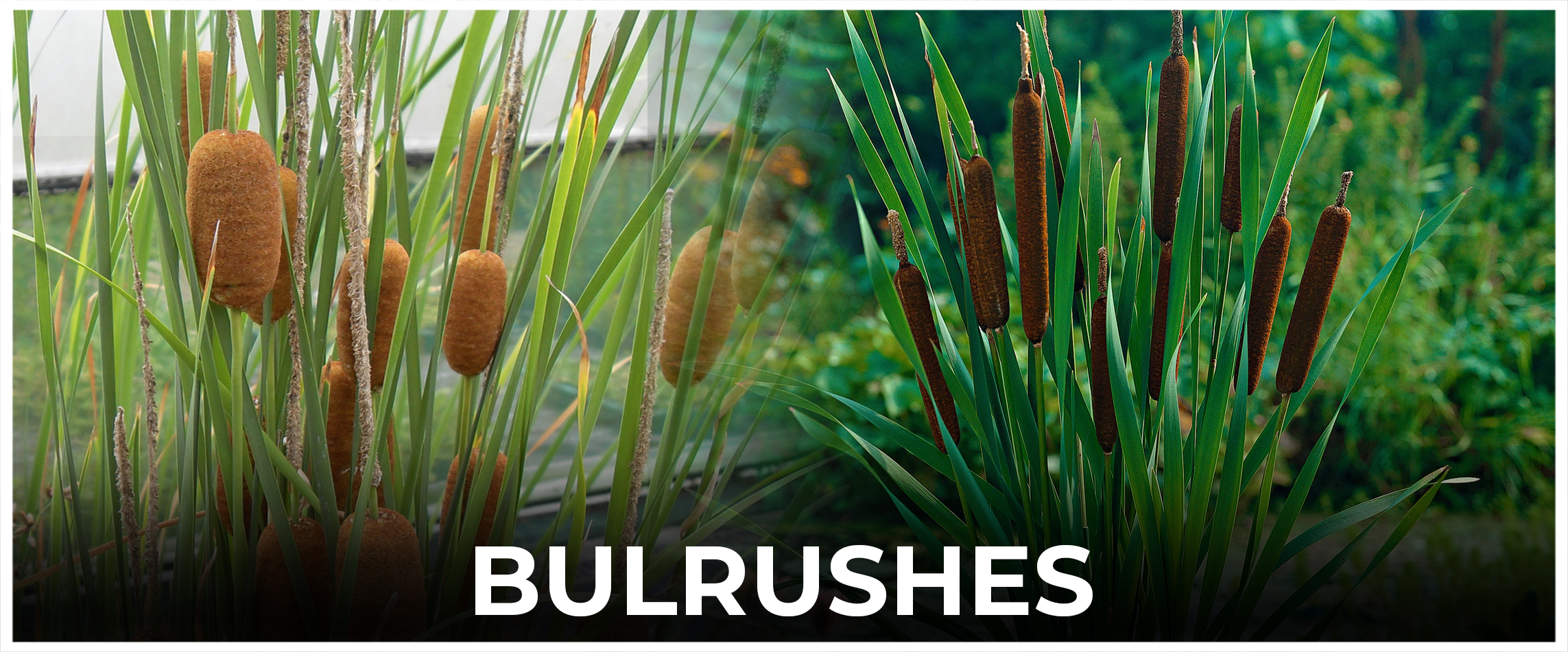
Bulrushes
Bulrushes are tall, thin plants with round stems and long, grassy leaves. They grow in wet areas in North America, in marshes, swamps, and near ponds.
Bulrushes provide homes and food to many animals, including birds, bugs, and pond fish. Their spikes are densely packed and have tiny flowers.
Bulrushes bloom in the summer. Birds like to eat their seeds. Bulrushes can help clean the water by removing extra nutrients so algae won’t grow as much.
Water Hyacinth
Water Hyacinth is an excellent floating pond plant. It has pretty lavender-blue flowers and shiny, rounded leaves. Aside from looking nice, this plant overgrows and helps stop algae by taking nutrients and blocking the sunlight on the water’s surface.
Just ensure it doesn’t spread too quickly to avoid too many things in one place.
Bog Bean
Bog bean is a vigorous plant that lives in shallow water and wet soil. Its white or pink flowers make the pond look elegant and attract beneficial bugs.
Bogbean helps clean water by absorbing extra nutrients, stopping the water from getting stuck, and keeping the environment suitable for water animals.
Japanese Iris
For a classy look, think about putting Japanese irises in the pond. These plants have big, beautiful flowers and long leaves resembling swords.
They make the place look very pretty. Japanese irises can grow in different water depths and make ponds look beautiful. People who like water gardens like them.

Arrowhead
This water plant has arrow-shaped leaves and will make the pond look more attractive. Arrowhead plants make pretty white flowers that attract bugs and look nice when they’re growing.
These plants are perfect for shading, keeping the water cool, and providing fish with hiding places. Arrowhead can grow in different types of water, so it’s a good plant for ponds.
Horsetail
Horsetail, also called scouring rush, is a remarkable and challenging plant that can make a pond look nice and add a special touch. Its bamboo-like stems make it look different from the other plants in the pond.
This plant doesn’t just look nice; it also helps by adding oxygen to the water and making a good home for water animals. Horsetail is strong and can be used for fancy or more natural-looking ponds.
Cardinal Flower
Adding the colorful Cardinal flower to your pond garden will make it look more beautiful and help the environment. This flower has red tube-shaped blooms that attract hummingbirds because of the sweet liquid inside.
It adds a bright pop of color to the edge of the water. The Cardinal flower makes your pond look nice and helps animals and plants in our area. It is a sweet food for many insects, like butterflies and bees, so they return to it, making the area busy and full of activity.
Also, its muscular structure gives dragonflies places to land, helping to create balance in your garden.
Lizard’s Tail
Lizard’s tail adds fun and essentialness to your pond’s environment. Thriving in shallow water, this plant has unique tail-like flowers that look visually captivating, along with its arrowhead-shaped leaves.
In addition to looking pretty, this plant helps butterflies and small water animals by giving them food and a place to live in your pond. This helps to keep a good variety of living things in your pond.
Lizard’s tail helps clean water, keep soil steady, stop soil from washing away, and soak up extra nutrients to make the water healthier for plants and animals that live in it.
Lizard’s tail is a challenging and pretty plant that can easily improve the appearance of your garden and help it stay healthy. It doesn’t need much care and can adapt to different growing conditions.
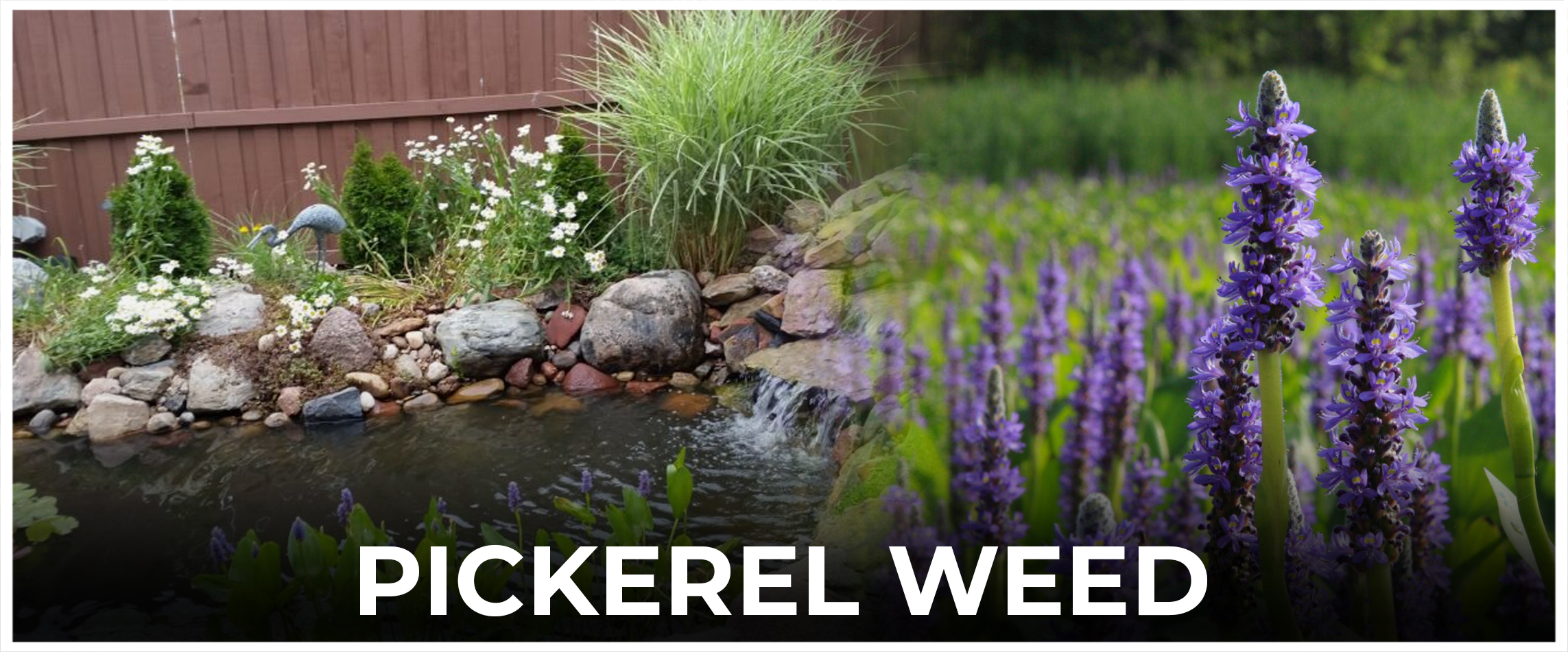
Pickerel Weed
Pickerel weed is a great plant for your pond because it looks nice and helps the environment. Its pretty purple-blue flowers attract bees, butterflies, and hummingbirds and make the plant look beautiful.
As the birds gather to drink nectar from the pretty flowers, they also help the flowers make more flowers, allowing all the plants nearby to grow. Yet Pickerel weed has other benefits besides being a place for pollinators. This plant is essential for insects like dragonflies, which live in the water near it.
Its thick leaves and strong stems also provide homes and shelter for different kinds of birds, which helps to increase the variety of plants and animals in your garden. Adding pickerel weed to your pond makes it look nicer and helps plants and animals thrive.
Sweet Flag
Sweet flag is a pond plant that has nice-smelling, sword-shaped leaves. It can grow in different depths of water. Its pleasant smell and pretty leaves make it a great plant at the pond’s edge.
Sweet flag looks pretty and helps clean water by soaking up bad stuff like pollutants and too many nutrients. This plant stops the soil from washing away near the pond and improves the garden.
Blue-Eyed Grass
Add more variety to your pond garden with the pretty Blue-eyed grass. Even though it’s called a grass, this plant is part of the iris family. It has thin leaves like grass and small, star-shaped, blue flowers with yellow centers.
Thriving in damp soil near ponds, Blue-eyed grass adds a fancy look to your water feature. This plant not only looks nice but also attracts helpful insects like bees and butterflies, which help pollinate all the plants in your garden. It’s small and looks pretty, so it’s great for the edge of a pond.
Pond Plant Care Tips
To ensure the pond plants thrive and continue to enhance the garden oasis, consider the following maintenance tips:
- Regular Pruning: Prune the yellowing or rusted leaves to stimulate growth and maintain the pond’s aesthetic qualities.
- Fertilization: Fertilizer tablets placed in the soil may benefit certain plants in a pond. However, too much fertilization can grow algae, so you must be careful.
- Divide and propagate: If some selected plants are too crowded, consider dividing and re-propagating them occasionally. This ensures a good balance in the ecosystem; every plant has its own space to grow.
- Adjust Seasonally: The pond plants may lie dormant through the season sometimes. Analyze the need to reduce water levels in dry months and give shelter for fragile plants through cold seasons to extend the duration of their growth.

Frequently Asked Questions
Can I plant pond plants in pots?
Yes, you can grow many plants from ponds in pots so that they can work in different-sized gardens.
Make sure the container is big enough for the plant’s roots, use particular soil, and put the container in the right place in the pond. Growing plants in containers gives the freedom to decide how they grow.
How can I stop pond plants from spreading and taking over my pond?
It’s essential to take care of pond plants often to prevent them from growing too big. Separate and trim plants as necessary to manage their size.
Also, barriers or pots should be put in good spots to control plants that spread aggressively.
Watching and changing how each plant is cared for based on its specific needs will help keep the pond looking nice and balanced.
Wrapping it Up
As we finish looking at these essential pond plants, we can see that they do more than just look nice; they change things.
These plants look pretty in the garden and help keep the pond ecosystem balanced and protected. They make the water feature look great and keep it clear and fresh.
They also give oxygen to the animals that live in the water. Their leaves provide cover and protection, creating a safe environment for animals and plants to thrive.
By using these plants, you aren’t just making a pretty garden; you’re taking care of a living environment, making a stronger bond with nature, and creating a peaceful and beautiful place.
Remember that these plants are significant for creating a serene and quiet place when caring for the garden pond
